Yokohama is a dynamic port city that blends modern living with peaceful surroundings. As Japan’s second-largest city, it offers a slower pace of life compared to Tokyo without sacrificing urban convenience. With its clean streets, seaside views, and open spaces, Yokohama has become a top choice for both locals and foreigners looking to settle down comfortably.
While many first consider renting an apartment in Tokyo, an increasing number are choosing to live in Yokohama thanks to its lower living costs, high quality of life, and a growing international community. Whether you’re earning a typical salary in Japan or relocating for work with a Japanese trading house, Yokohama offers diverse housing options that suit various lifestyles and budgets.
Why Choose Yokohama?
For many people moving to Japan, Tokyo is often the default choice. However, Yokohama, located just south of the capital, offers a compelling alternative that combines convenience, comfort, and cost-effectiveness.
Easy and Efficient Commute
Yokohama is only about 25 to 35 minutes away from central Tokyo by train via major lines like the JR Tokaido, Yokosuka, and Keihin-Tohoku lines. This quick and reliable connection allows residents to work in Tokyo while enjoying a calmer, more spacious home environment. Trains are frequent, and multiple express services make daily commuting highly manageable, even during rush hours.
Budget-Friendly Apartment Selection
While rental costs in Tokyo’s urban wards, such as Minato, Shibuya, or Chiyoda, can be extremely high, Yokohama offers far better value. Tenants can often find newer or more spacious apartments for the same rent they’d pay for a small 1R unit in central Tokyo. This makes it especially attractive for families or professionals looking to maximise their living space without exceeding their housing budget.
Nature-Rich and People-Friendly Surroundings
Yokohama is known for its open public spaces, waterfront parks like Yamashita Park, and scenic walking paths along the bay. The city also invests in community infrastructure, including playgrounds, libraries, and sports facilities. These features create a family-friendly atmosphere that is ideal for raising children or enjoying a more relaxed pace of life away from Tokyo’s crowds.
Friendly Vibe with a Multicultural Touch
Yokohama has long been one of Japan’s most international cities. With a history as one of the country’s first open ports, it developed a unique cultural blend that continues today. The city is home to numerous international schools, foreigner-friendly clinics, and multicultural communities. Whether you’re from the Philippines, the United States, Europe, or elsewhere, you’ll find support networks and resources tailored for expats.
Balanced Living Regardless of Income Level
Thanks to its diverse housing market, Yokohama caters to a wide range of incomes. Whether you’re earning close to the minimum salary in Japan or fall into the middle-class salary range in Tokyo, you can find comfortable accommodation that aligns with your financial situation. Even individuals earning the median salary in Japan, estimated around ¥4.4 to ¥5 million annually, can afford high-quality apartments with modern amenities, especially when compared to what that budget would offer in Tokyo.
In short, Yokohama provides the best of both worlds: proximity to Japan’s economic hub and a more relaxed, affordable, and livable environment. It’s a city that offers room to breathe, literally and financially, making it an excellent choice for both newcomers and long-term residents.
Types of Apartments Available
Yokohama offers a broad spectrum of housing options that meet the needs of diverse residents, whether you’re a solo expat, a digital nomad, or a growing family settling down long-term.
Studios and 1R Units
These compact apartments, often ranging from 15 to 25 square meters, are best suited for students, single professionals, or new arrivals who prioritise affordability and simplicity. They’re commonly found near major stations and universities, making them ideal for people working with a limited housing budget or earning at the lower end of the Japanese salary average. Despite their smaller size, many are newly renovated and include efficient layouts, built-in storage, and essential appliances.
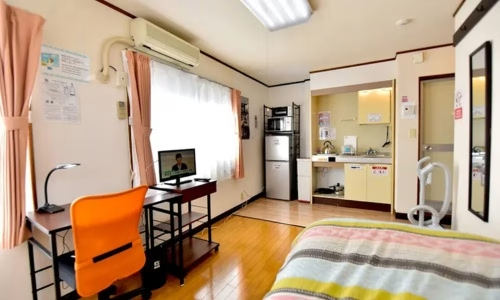
Compact, affordable student housing
1LDK and 2LDK Apartments
A step up in size and comfort, these units include a separate bedroom (or two), a living and dining area, and a kitchen. They typically range from 35 to 70 square meters. These layouts are especially popular with couples and small families who require more space without dramatically increasing rent. For residents earning a middle class income in Japan or even close to the median salary in Japan, these apartments strike a balance between cost and convenience, often located in quieter, residential neighbourhoods with easy access to transit.
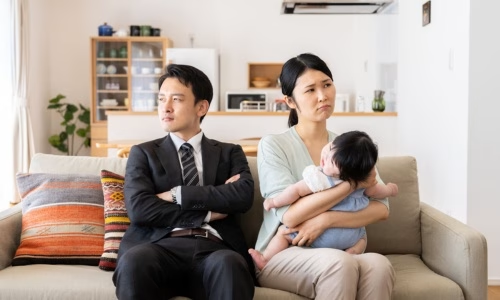
Spacious living for small families
Serviced Apartments
For short-term residents or those on corporate assignments, serviced apartments offer a hassle-free housing solution. Fully furnished and inclusive of utilities, internet, and regular cleaning, these units are designed for convenience. They are often situated in business districts like Minato Mirai or near major transport hubs. Because of the added services and prime locations, rent is higher, making them more suitable for tenants with substantial relocation packages or those earning above-average Japanese workers’ salary levels. Companies frequently lease these for international staff, especially when the stay is under one year.
Whether you’re budgeting carefully based on a normal salary in Japan or seeking a premium residence while working under a global firm, Yokohama’s rental market provides options that cater to a wide range of expectations and income levels.
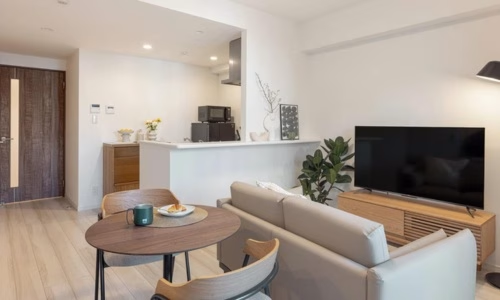
Hassle-free stays for expats
Well-Loved Districts to Keep on Your Radar
Yokohama is a city of many faces, each district offering a unique lifestyle and vibe. From sleek, modern waterfronts to tranquil residential hillsides, there’s a neighbourhood that suits every preference and budget. Here are some of the top areas to consider when renting an apartment:
Minato Mirai – Modern, Scenic, and Upscale
As Yokohama’s most iconic waterfront development, Minato Mirai is home to shimmering skyscrapers, ocean-facing parks, and luxury malls like Landmark Plaza and Queen’s Square. Its futuristic cityscape, proximity to office complexes, and stunning views of Tokyo Bay make it an ideal location for professionals with a generous housing budget or those earning at or above the median salary in Japan. Apartments here often feature high-end finishes, secure access, and proximity to international hotels and fine dining.
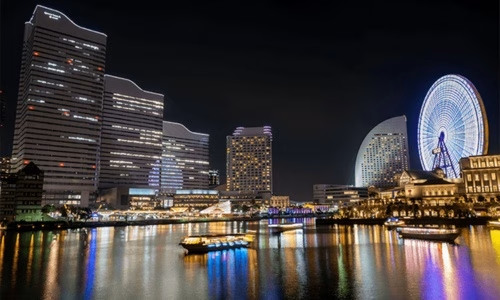
Luxury bayfront living in Minato Mirai
Yamate / Motomachi – Historic Elegance and Expat Appeal
Nestled on a hillside just south of central Yokohama, the Yamate and Motomachi areas are steeped in history. With preserved Western-style architecture, cobblestone streets, and international schools, this district has long been a favourite among diplomats and long-term foreign residents. The peaceful surroundings and European flair offer a lifestyle reminiscent of suburban Europe, making it perfect for families or individuals seeking privacy and charm. While rents are on the higher side, the quality of life justifies the cost for those with stable incomes or corporate housing support.
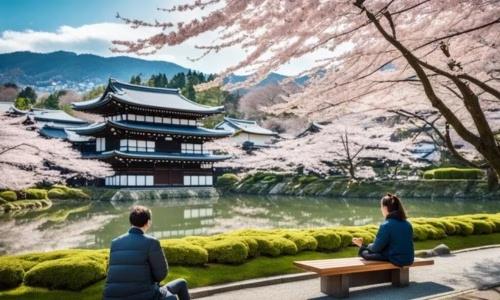
Historic charm and expat appeal
Kannai – Central, Convenient, and Culturally Rich
Kannai is Yokohama’s administrative and legal heart, home to the city hall, government buildings, and several historical sites. The area is bustling during the day, with easy access to multiple train lines, including the JR Negishi Line and Yokohama Municipal Subway. Residents enjoy a mix of convenience and culture, with plenty of museums, art galleries, and izakayas lining the streets. Apartment options vary from affordable studio units to spacious 2LDKs, making it suitable for a broad range of earners, from newcomers on a normal salary in Japan to seasoned professionals.

Central convenience with cultural flair
Totsuka / Hodogaya – Suburban Comfort and Affordability
Located slightly inland, these neighbourhoods offer a more relaxed, residential atmosphere. Known for their wide open spaces, parks, and family-oriented facilities, Totsuka and Hodogaya are particularly attractive to households on a tighter budget. Rent tends to be lower, and larger apartments (such as 2LDK or 3DK units) are more accessible, making them ideal for those earning a middle-class income in Japan or even the minimum salary in Tokyo. With schools, supermarkets, and healthcare services within walking distance, these areas provide a practical and comfortable lifestyle without sacrificing urban connectivity.
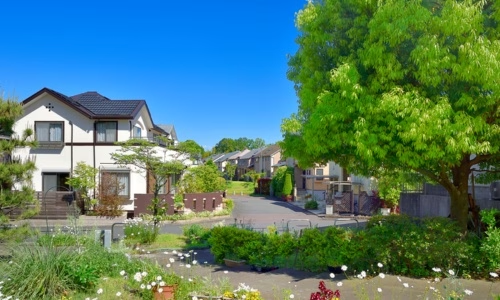
Affordable suburban living for families
Budgeting & Average Rental Prices
Renting an apartment in Yokohama can be significantly more affordable than in Tokyo, but it’s still essential to budget carefully, especially for newcomers unfamiliar with Japan’s rental process and associated fees.
Monthly Rental Averages by Unit Configuration
- Studio / 1R Units: Typically range from ¥50,000 to ¥80,000 per month. These are ideal for single residents, students, or professionals earning a more modest or entry-level salary in Japan. Many of these apartments are located near train stations or university areas.
- 1LDK / 2LDK Apartments: Prices vary depending on proximity to central neighbourhoods, size, and building age, generally falling between ¥90,000 and ¥150,000 monthly. These layouts offer ample space for couples or small families and suit those with a middle class salary in Japan or higher.
- High-End Serviced Apartments: Found mostly in business districts like Minato Mirai or near international schools, these can cost upwards of ¥200,000 per month. They come fully furnished with utilities and services included, and are often rented by expats with substantial relocation packages or professionals with above-average Japanese salary levels.
One-Off Payments and Regular Outlays
Besides monthly rent, you’ll need to account for several initial and ongoing expenses:
- Shikikin (Deposit): Usually the equivalent of 1–2 months’ rent. Refundable depending on the apartment’s condition at move-out.
- Reikin (Key Money): A traditional, non-refundable gift to the landlord, commonly equal to 1 month’s rent, although in recent years it’s become negotiable or even waived by some landlords.
- Agency Fee: If using a real estate agent, expect to pay about 1 month’s rent as a service charge.
- Maintenance Fees: Typically ¥3,000–¥10,000 per month, depending on the building’s age and amenities (e.g., elevators, security, shared facilities).
Understanding Salary Context in Japan
With the minimum wage in Japan per month averaging around ¥180,000–¥200,000 depending on the prefecture, it’s important to align your housing choices with your income. Those earning a median salary in Japan (approximately ¥4.4 to ¥5.5 million annually or ¥370,000–¥460,000/month) will have more flexibility and can access better quality housing in central neighbourhoods. If you’re part of the middle-class income in Japan, Yokohama offers numerous areas where comfortable housing is attainable without financial strain.
Money-Saving Tips for Renters
- Avoid Premium Zones: Areas like Minato Mirai and Yamate are luxurious but costly. Consider neighbourhoods such as Hodogaya or Totsuka, where rents are lower and apartments are larger.
- Search in Japanese: Renting directly from property owners via Japanese-language websites (like SUUMO, Homes, or At Home) can reduce or eliminate agency fees. Leverage language tools to assist with understanding.
- Consider Older Buildings: While not as sleek as new constructions, many older apartments are well-maintained and significantly cheaper. Look for units with recent renovations or updated utilities.
How to Search and Secure a Place
Finding an apartment in Yokohama can feel overwhelming at first, especially if you’re unfamiliar with the Japanese housing market or don’t speak the language. Fortunately, there are plenty of resources tailored for foreigners, and with the right approach, you can streamline the process and avoid common pitfalls.
Recommended Platforms for Foreigners
Start your search on websites that cater specifically to expats or offer English-language support. These platforms typically list properties where landlords are open to renting to non-Japanese tenants:
- Arealty.jp – A real estate agency specialising in helping foreigners find homes across the Tokyo-Yokohama area, with English-speaking staff and transparent listings.
- GaijinPot Housing – A trusted platform for foreigners, offering listings that do not require a Japanese guarantor and are foreigner-friendly by default.
- SUUMO – While primarily in Japanese, SUUMO has an English-language version and includes a huge selection of properties. Using a browser with translation tools can help you explore more listings than just those on English-only websites.
Working Together with Area Property Agents
Many rentals in Japan are handled through agencies. When working with an agent, keep the following tips in mind:
- Clarify All Fees Upfront: Japanese leases often include multiple charges like shikikin (deposit), reikin (key money), agency fees, and maintenance costs. Make sure to get a complete fee breakdown upfront.
- Check for English Support: Not all agents speak English fluently. If language is a barrier, request a bilingual agent or consider bringing a friend/interpreter if possible.
- Understand Contract Terms: Pay close attention to the lease duration (typically 2 years), auto-renewal policies, and penalties for early termination. Contracts can be strict, so ask for clarification on anything that seems vague.
Important Details to Notice During Apartment Visits
When you schedule apartment viewings, make the most of your visit by inspecting for key issues and asking the right questions:
- Water Damage & Mould: Check corners, ceilings, and under sinks for signs of moisture or previous leaks.
- Ventilation & Sunlight: Good airflow and natural light are important in Japan’s humid climate. South-facing apartments tend to get more sun and dry faster.
- Garbage Disposal Rules: Ask where and how to dispose of trash. Japan has strict separation rules, and not all buildings offer convenient collection systems.
- Noise & Insulation: Older buildings may have thinner walls. Visit during the daytime and listen for ambient noise from neighbours or nearby roads.
- Internet Access & Modifications: Confirm whether internet is installed and whether you’re allowed to make changes (like installing shelves or hanging fixtures). This is especially relevant in Japanese housing, where restrictions on modifications are common.
Legal Considerations and Lease Process
Signing a rental contract in Japan involves multiple steps and can seem overwhelming at first, especially for foreigners unfamiliar with the country’s legal and cultural norms. However, knowing what to expect in advance will help you avoid delays and misunderstandings.
Application Process
Once you’ve found a suitable apartment, the first step is to apply. Make sure these items are ready before applying:
- Valid ID (passport or My Number card)
- Residence Card (Zairyu card)
- Proof of Employment or Income: This could be a letter from your employer, recent pay slips, or a tax statement showing your pay rate in Japan or monthly salary in Japan. The landlord wants to ensure you have a stable source of income and can afford the rent.
Note: In some cases, if your salary in Japan is near the minimum wage in Japan per month, you may be asked to provide additional guarantees or pay more upfront.
Guarantor Requirement
Most rental contracts in Japan require a guarantor (hōnin), someone who agrees to cover rent if you default. Since most foreigners don’t have close contacts in Japan who qualify, the alternative is to use a guarantor company. This is a paid service (often ¥20,000–¥50,000 upfront), but it is widely accepted by landlords and simplifies the process.
Reviewing the Contract
Once confirmed, the next step is receiving your tenancy contract. It’s crucial to read it thoroughly, and if possible, have it reviewed by someone fluent in Japanese. Focus on:
- Contract Length: Typically 2 years, with renewal fees required.
- Automatic Renewal Clauses: Some leases auto-renew unless cancelled in writing ahead of time.
- Early Termination Penalties: Leaving before the lease ends may incur fines or forfeiture of deposits.
- Rules for Renovations, Pets, or Subletting: These are strictly regulated in Japanese housing, especially in condominiums.
Initial Payment
Be financially prepared. Moving into an apartment usually requires paying several months’ worth of rent and fees upfront, including:
- Shikikin (Deposit): 1–2 months’ rent, refundable
- Reikin (Key Money): 1 month’s rent, non-refundable
- Agency Fee: About 1 month’s rent
- First Month’s Rent
- Guarantor Company Fee
- Monthly Facility Fees – Subject to Building Type and Age
Altogether, this can total 4 to 6 months’ rent, so it’s essential to budget in advance, especially for those earning a minimum salary in Japan or managing household expenses on a middle-class income in Japan.
Language & Legal Support
If you’re not confident in Japanese, consider working with a real estate company that offers multilingual support. Some agencies provide assistance in English, Tagalog, or other languages, which is especially helpful for Filipino tenants concerned about sahod sa Japan (salary expectations in Japan) and legal nuances.
Several services also offer translation, lease negotiation, and even help setting up utilities after move-in. These options are worth the investment to avoid misunderstandings or hidden obligations.
Living Comfortably in Yokohama
While affordable housing and proximity to Tokyo are major draws, what truly sets Yokohama apart is its exceptional livability. The city delivers a harmonious balance of urban convenience, community connection, and recreational opportunities, making it an ideal choice for both short-term residents and long-term expats.
Practical Perks for Daily Life
Yokohama is well-equipped with everything residents need for a comfortable lifestyle:
- Education: The city is home to reputable public schools and several international institutions such as Yokohama International School and Saint Maur International School, making it a practical choice for expat families.
- Healthcare: A wide network of hospitals and English-speaking clinics ensures that both routine and emergency care are accessible. Facilities like Yokohama City University Hospital and Minato Mirai Hospital are known for high standards of care.
- Shopping & Services: Supermarkets, specialty stores, and shopping malls like Sogo, Joinus, and Queens Square cater to a variety of tastes and budgets. Many shops offer multilingual support, easing the shopping experience for non-Japanese speakers.
Supportive Expat Communities
For newcomers, adjusting to life in Japan can be challenging, but in Yokohama, you’re never alone. The city boasts a vibrant and growing international population, which has led to the formation of numerous community groups, clubs, and cultural organisations.
- Language Exchanges & Meetups: Regular events are held throughout the city for Japanese-English language exchange, networking, and cultural integration.
- Community Centres: Facilities like the Yokohama Association for International Communications and Exchanges (YOKE) provide multilingual resources, legal assistance, and volunteer programs to help foreign residents adapt with ease.
- Cultural Events: From international food festivals to neighbourhood matsuri (festivals), there are countless opportunities to connect with locals and fellow expats alike.
Recreation and Relaxation
Yokohama offers a wide range of leisure activities that make city life enjoyable and stress-free:
- Parks & Outdoor Spaces: Enjoy a jog or a relaxing stroll at Yamashita Park, or explore the traditional gardens of Sankeien. The city’s layout makes green spaces easily accessible from most residential areas.
- Museums & Attractions: Families and visitors alike enjoy destinations like the Cup Noodles Museum, Ramen Museum, and the modern art galleries in the Naka and Minato Mirai districts.
- Waterfront Lifestyle: The harborfront promenades offer picturesque views, fresh sea air, and a calming atmosphere that contrasts beautifully with Tokyo’s dense urban energy.
A Smooth Transition into Japanese Suburban Life
Many foreigners who choose to settle in Yokohama highlight its calm, organised, and welcoming environment. Whether you’re new to Japan or transitioning from a smaller town, the city’s well-designed infrastructure, friendly locals, and access to Tokyo’s professional hub create an ideal blend of opportunity and comfort.
In particular, those coming from abroad and adjusting to the Japanese suburban lifestyle appreciate how Yokohama makes that transition smooth, offering more space, a slower pace, and a greater sense of community, without giving up the conveniences of big-city living.
Conclusion
Yokohama strikes a rare balance, modern and well-connected, yet peaceful and affordable. Whether you’re earning a normal salary in Japan, above the median household income in Tokyo, or starting on a minimum salary in Japan, the city offers a variety of neighbourhoods and flexible housing options to match your lifestyle.
Start your apartment search early, especially during Japan’s peak moving seasons (March–April and September). Planning and understanding the rental process will give you a major advantage. For a smoother experience, consider using Arealty, a trusted agency that helps foreigners find the right home in Japan with ease.
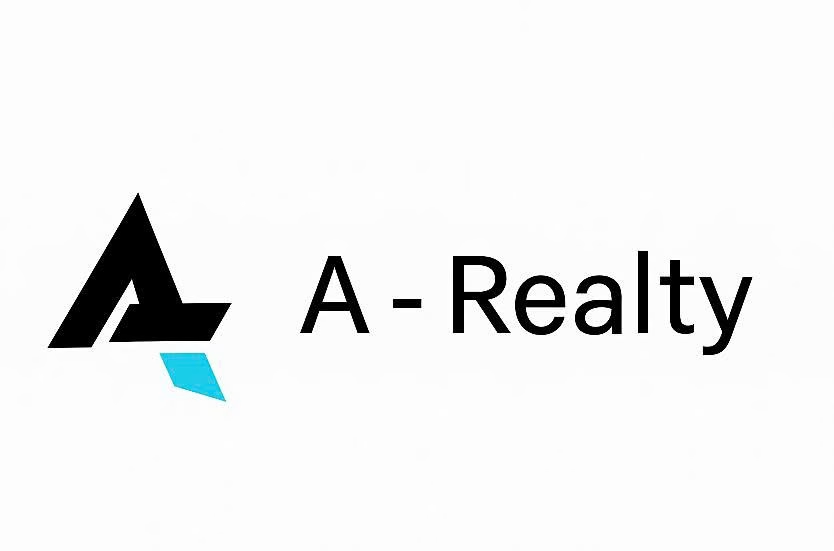
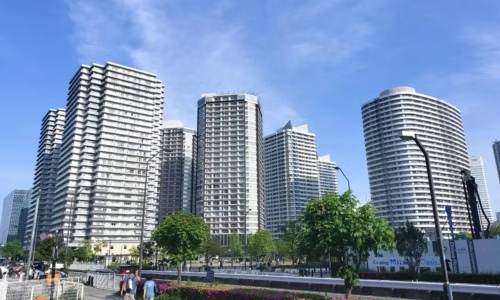



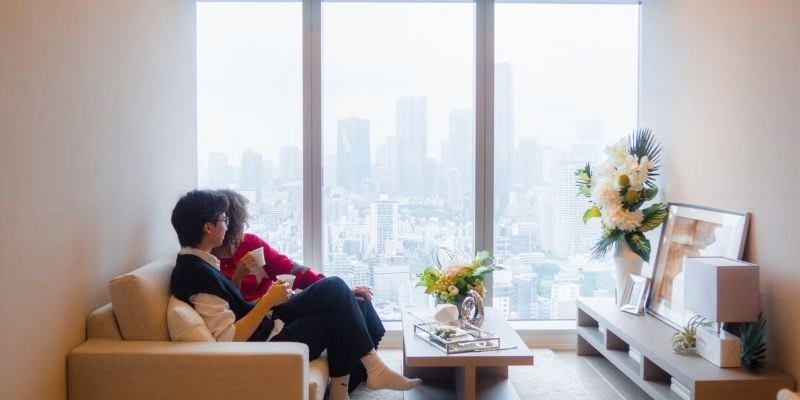
Leave a Reply